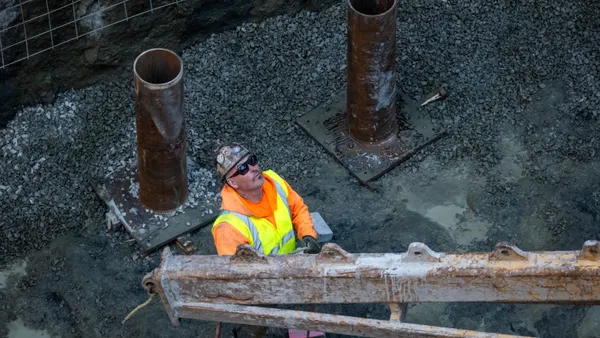Dive Brief:
-
Housing starts fell 5.5% in May to a seasonally adjusted annual rate of 1.092 million, down from April's downward-revised 1.156 million, the Commerce Department reported Friday. May's figure was down 2.4% year-over-year and represents the lowest level in eight months, according to MarketWatch.
-
Building permit authorizations, an indicator of future construction activity, continued to cool in May, falling 4.9% from April's rate of 1.228 million to 1.168 million for the month, and coming in 0.8% below the year-ago mark. May marks the lowest level for building permit authorizations in 13 months.
-
Single-family starts fell 3.9% in May to 794,000 from April's downward-revised rate of 826,000 but were 8.5% ahead of a year ago. Multifamily starts continued to decline, dropping 9.8% from April's downward-revised rate of 315,000 to 284,000 starts in May. Multifamily starts were down 25.7% year-over-year.
Dive Insight:
For the third-straight month, housing starts missed analyst expectations, according to MarketWatch, as economists had predicted a rate of 1.23 million starts for May. While starts slowed again last month, the period from January through May represented a 3.2% increase from the same period in 2016, alongside a 5.5% gain in year-to-date building permit authorizations, pointing to slow yet steady growth in the market.
Still, May's slowdown in single-family starts — along with continued declines in the multifamily segment and building permit authorizations — point to headwinds from the lot and labor shortages taking their toll on stronger activity.
Builder confidence in the market, according to May's National Association of Home Builders/Wells Fargo Housing Market Index, reached its second-highest reading since the recession — likely on the back of steady demand and limited inventory. However, June's report on builder sentiment was less optimistic, with all three of the HMI's subcategories posting losses for the month. While confidence has remained relatively stable throughout the year, June's decline is a reflection of builders' increasing frustration around challenges scouting skilled labor and working around the persisting lot shortage.
Uncertainty surrounding the impact of the Canadian softwood lumber tariff also stands to dampen builders' prospects. Lumber prices continued to rise in May, increasing 2.2% for the month and 12.9% year-over-year. The ongoing trade dispute between the U.S. and Canada has been one of the driving forces between recent price growth in the material. While a preliminary determination on antidumping duties is expected later this month, speculation surrounding the future of tariffs will likely continue to drive up prices. The resulting import taxes, in turn, could spur a domestic supply shortage, unless U.S. producers increase production.












